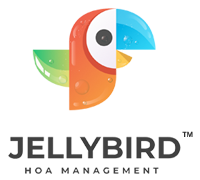Board meetings are vital to the functionality of any HOA. Since board members volunteer their time to better their community, it’s important that meetings are meaningful and time efficient. No one wants to have lengthy, unproductive meetings, so try out the top ten tips below to keep your board meetings both short and effective!
- Send the notice in advance. Before the meeting, hammer out all the details, opting for a convenient time and location and utilizing virtual options, if possible and/or allowed. After confirming a quorum of the board will be available, distribute the notice ahead of the meeting, ensuring it’s in compliance with state law and the association’s governing documents. This way, all board and association members are well aware of the meeting so that everyone can be on time and ready to go.
- Prepare a timed agenda. Create a brief agenda with set time limits for each discussion item as well as meeting start and end times, taking into consideration any pertinent legal requirements. As a best practice, aim for less than an hour total. However, the closer to 25 minutes, the better. Check out this guide to master the 25-minute meeting. Then, after nailing the agenda, distribute it along with any relevant materials a few days beforehand.
- Focus on pressing topics only. When drafting the agenda, prioritize urgent, key items, keeping the action items concise and relevant. Additionally, solicit homeowner questions beforehand to align the discussion, where possible, with what homeowners are concerned about. This also saves time during the open forum period! Then, get board approval on the agenda so that everyone is on the same page.
- Establish expectations. Set standard expectations for the meeting and all participants, such as a code of conduct. Share these expectations with the board and homeowners to ensure the meeting can flow as smoothly as possible.
- Communicate! Along with sharing the agenda, meeting materials, and expectations, it’s important to just be transparent. This will not only strengthen the board-owner relationship, but also the relationships within the board. Make sure to divide work fairly and equally, be able to provide and receive feedback when necessary, and appreciate one another. Better relationships will make for better meetings!
- Start on time. Starting the meeting on time will provide a solid foundation and cadence for the rest of the meeting. If the whole board, or at least everyone who is available, is present and on time, the meeting can begin with everyone on the same foot and no time will be wasted backtracking.
- Designate roles and standard procedures. Either right before or when the meeting begins, remind each board member of their role. One person, usually the president, should be designated as the speaker to facilitate the discussion. Another person, generally the secretary, should be in charge of taking minutes. Also, establish and follow standard procedures. For example, try using parliamentary procedures, adopting practices from Robert’s Rules, if legally allowed. Additionally, follow the timed agenda, using a timer to limit the discussion and homeowner forum. Allow approximately ten minutes for each agenda item and limit each owner to three minutes only during the open forum.
- Summarize the discussion. At the end of the meeting, briefly review what happened during the meeting for clarification. If any board members or homeowners showed up late, they’ll know what they missed without even having to ask.
- Follow up after the meeting. After the meeting, confirm with board members on responsibilities via email. This way, each board member will understand what their next steps are. If there’s any lingering business, try to resolve those issues outside of the meeting, if able and in compliance, pushing any controversial items to a later date if needed and allowed. However, in Texas, remember to consider the requirements for what needs to be discussed in open board meetings.
- Schedule the next meeting. Ideally, before the meeting is over, the next meeting should be scheduled. If this isn’t possible, try to establish the details for the next meeting as soon as possible so that a quorum can be met, and the next meeting can be as efficient as this one!
For more tips and tricks to make the most out of your board meetings, visit our partners over at Boardline Academy to become the best HOA leader you can be!

